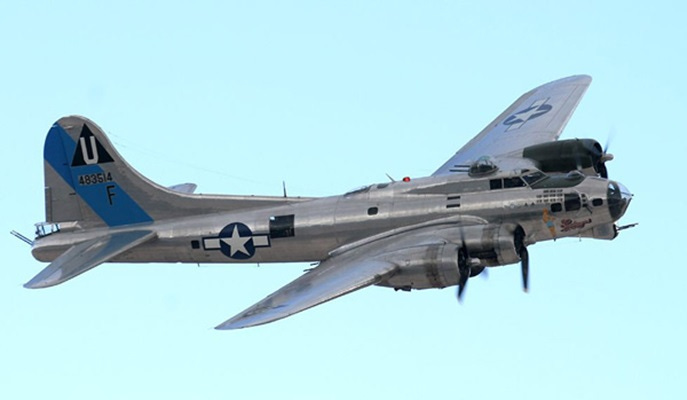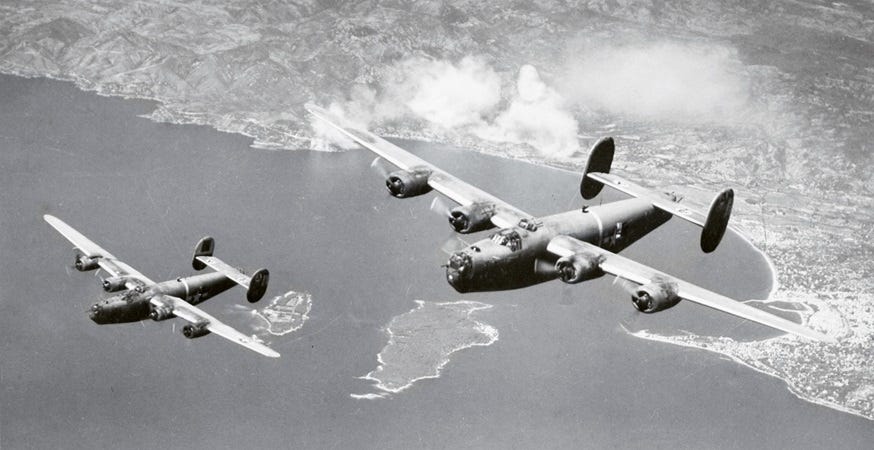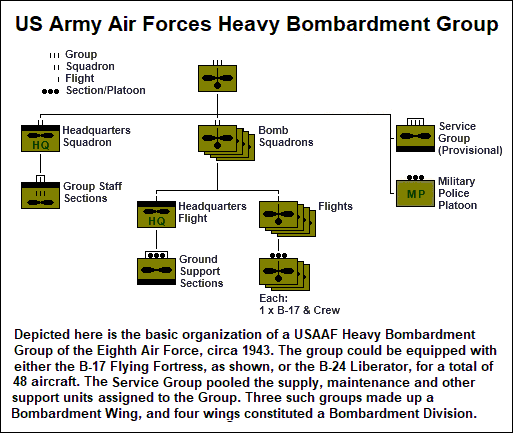
Note: Organization of the United States Army Air Forces
During World War Two, America’s air force was not an independent service but a branch of the US Army. The United States Army Air Corps (USAAC), as it was called, embodied all flying units plus certain support units. But when Headquarters, United States Army Air Forces (USAAF) was established in June 1941, it effectively replaced the USAAC, leaving it with administrative functions only. The USAAF assumed command and control of all Air Corps units, plus the elements of other Army branches that were allocated to USAAF operational commands, such as quartermaster (supply), military police, signal, and engineering units.
The group was the basic unit of the USAAC, analogous to the regiment in the Army’s ground combat branches, and it was the color-bearing echelon of the Army Air Corps. With a few exceptions, the group was mission specific: bombardment, fighter, reconnaissance, troop carrier, etc., flying one type of aircraft. The two group types primarily responsible for conducting the strategic air offensive against the Axis powers were the Bombardment Group (Heavy) and the Bombardment Group (Very Heavy).
As originally organized the heavy bomb group was formed with a group headquarters squadron and three bomb squadrons, but in early 1942 a fourth bomb squadron was added. Bomb squadrons had twelve aircraft each for a group total of forty-eight, with sixty combat crews assigned. By 1945, however, the number of aircraft per squadron had risen to eighteen, for a group total of seventy-two, with ninety-six combat crews assigned. In both the European and Pacific Theaters of Operations, the aircraft assigned were either B-17 Flying Fortresses or B-24 Liberators.
In the Pacific Theater of Operations, the very heavy bomb group was formed with a group headquarters squadron and three bomb squadrons with fifteen aircraft each for a group total of forty-five, with sixty combat crews assigned. The aircraft assigned was the B-29 Superfortress.
The group headquarters squadron and the bomb squadrons constituted the air echelon of the bomb group. Its composition is shown in the accompanying diagram.
Once deployed to a theater of operations, a bomb group (H) or (VH) was permanently assigned to a station (air base), usually consisting of a main airfield and a satellite airfield. There it was joined by various service and support units. These were permanently assigned to the group and became its ground echelon, informally referred to as the provisional service group. The units comprising the ground echelon are shown in the accompanying diagram.
The group commander, usually a full colonel, had two principal subordinates: the air executive officer for the air echelon and the ground executive officer for the ground echelon, usually lieutenant colonels. The group staff officers were the S-1 or group adjutant (personnel and administration), S-2 (intelligence), S-3 (operations), and S-4 (logistics), usually majors or captains. There were also specialist staff officers, e.g. the group lead navigator and the group lead bombardier.
At the bomb squadron level, the commander was usually a major. The squadron was divided into flights of three aircraft each: For example, the 1943 heavy bomb squadron with twelve aircraft had four flights. Flight commanders were usually senior captains. The squadron also had a headquarters section and ground support sections for armament, ordnance, communications, medical services, aircraft maintenance, and mess (food service).
A heavy bomber crew varied from nine to thirteen members depending on the model and variant of the aircraft flown. For example, the late-war B-17G had a crew of ten: pilot, copilot, navigator, bombardier/nose gunner (all officers), flight engineer/dorsal turret gunner, radio operator/gunner, waist gunners (2), tail gunner, ventral ball turret gunner (all noncommissioned officers). The late-war B-24J also had a crew of ten: those positions listed for the B-17G plus an additional NCO gunner for the aircraft’s powered nose turret, and with the radio operator doubling as a waist gunner.
Three or four bomb groups constituted a bombardment wing, usually commanded by a brigadier general or a full colonel. Organization for combat above the level of the wing varied. In the Eighth Air Force, based in Britain, four or five bomb wings constituted a bombardment division, usually commanded by a major general. By 1944, the Eighth had three bombardment divisions with forty bomb groups in fourteen bomb wings. (Bombardment divisions were redesignated as air divisions in December 1944.) The Fifteenth Air Force, based in Italy, had twenty-one bomb groups in five bomb wings but no bombardment or air divisions; the wings were directly subordinated to the Fifteenth AF headquarters.
In the Pacific theater, the bomb wings of Twentieth Air Force came under XX Bomber Command (operating from China) and later XXI Bomber Command (operating from the Mariana Islands). By early 1945, XXI Bomber Command had five bomb wings under command, each with four bomb groups.
There were other types of groups and separate squadrons assigned to the strategic air forces: fighter, reconnaissance, radar countermeasures, special operations and training. These units, and the organization of the numbered air forces as a whole, will be described in subsequent articles, one devoted exclusively to the Fighter Group, which in its bomber escort role vanquished the Luftwaffe over Germany in 1944.








